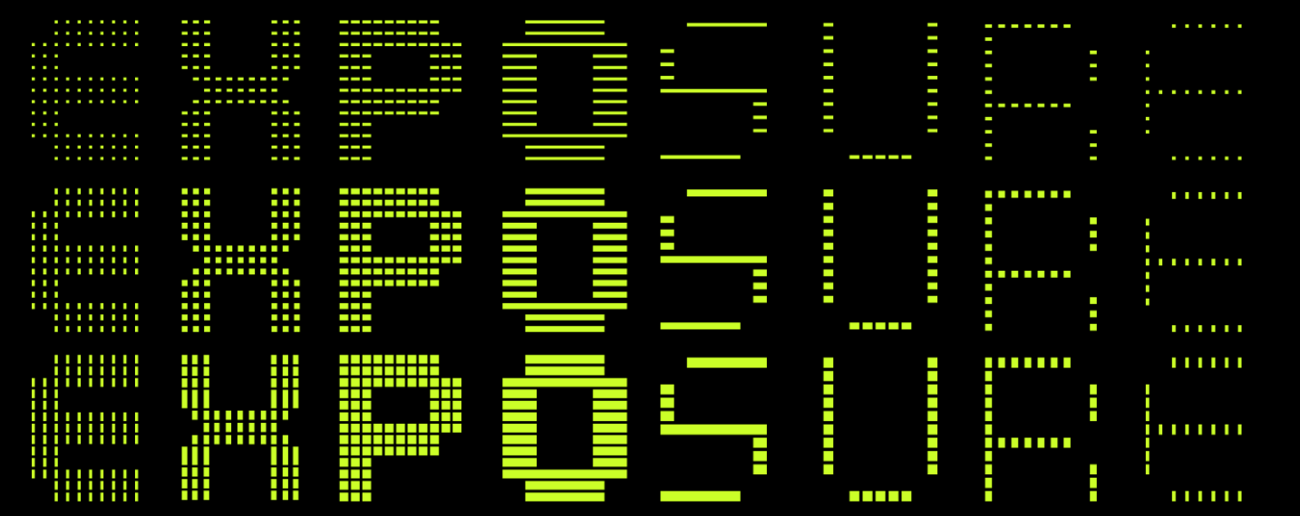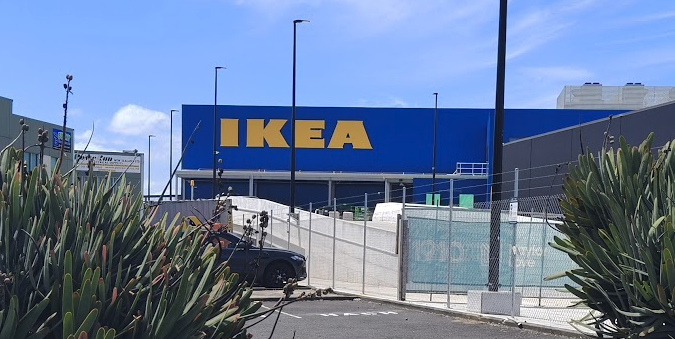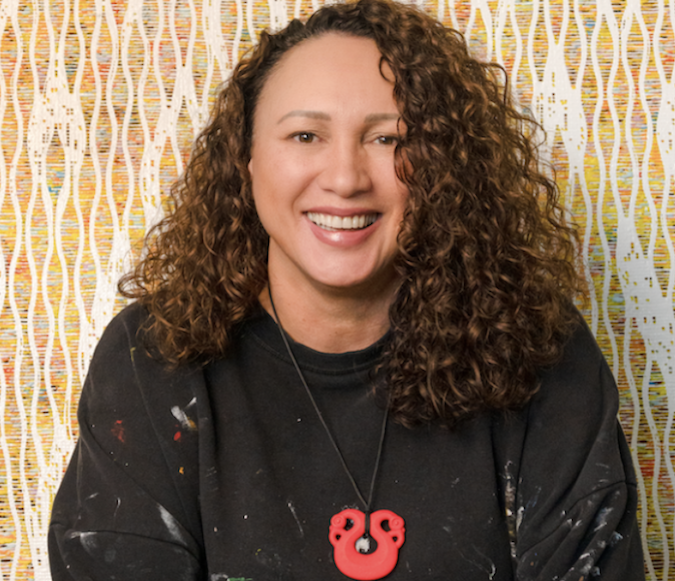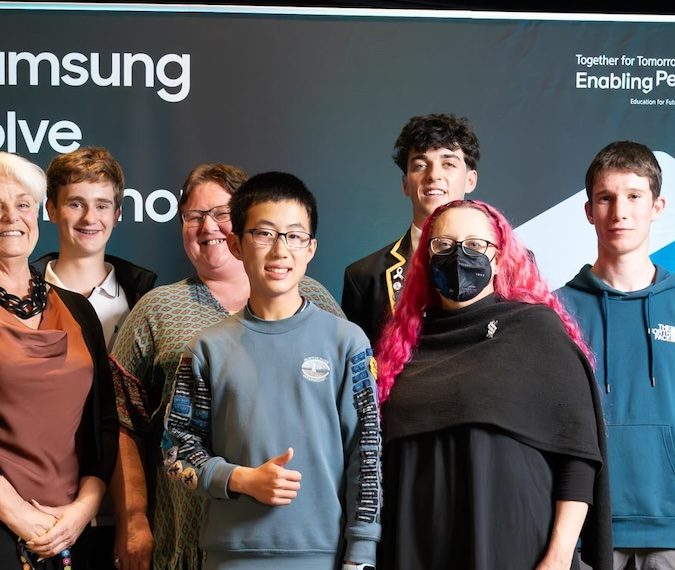Designing a better future: Massey University’s graduate exhibition He Kanohi Kitea – Exposure 2019

While the future can at times appear bleak – think unstable global politics and climate change – hope can be found in ideas, innovation and inspiration, all of which are proudly on show at Massey University’s graduate exhibition ‘Exposure He Kanohi Kitea’.
Exposure showcases the work from undergraduate and Masters’ students in design, fine arts, creative media production and commercial music.

On Friday, the graduating students, their families and supporters gathered to celebrate at the exhibition’s opening.
Opening with a speech from Professor Claire Robinson, Pro Vice-Chancellor of the College of Creative Arts, she talked about the “incredible amount of work” put in by both the 400 plus students as well as staff.

Image: Claire Robinson
“It’s not just an exhibition – we’ll see performances, experiences, games and lots of information”.
In a touching moment, she also asked students to give a hug to their supporters in gratitude of helping them through the highs and lows of the past four years.
Two student representatives, Charlie Myer and Taylor Wickman, spoke to the large crowd of their own personal battles to get to the end of their degrees and how the course had helped them grow and thrive.
On the night Idealog chatted with four inspirational honours students about their final year projects. See their awesome work below:
Freehand

Image: Matt Kendrew
Bachelor of Design honours student Matt Kendrew designed an interactive app ‘Freehand’ which addresses the need of more New Zealanders to know basic New Zealand Sign Language (NZSL).
Kendrew says he didn’t have any connection to the deaf community, but his project idea came out of first semester research.
“I had done an internship and had seen people [there] doing motion design. I hadn’t given that a go yet and it was sort of something I wanted to try. [Freehand] seemed to fit – it’s a valid need and fits with what I wanted to explore”.
Coming from the position of not knowing any sign language did give him a new way of looking at the challenge.
“One of my lecturers said to me that the fact that I was coming into it completely fresh would mean I was probably able to articulate it better than people who are coming to solve issues that they were very passionate about.
“Whether I was aware of it or not the fact I was completely new to it really helped me to figure out what’s really important to know first up”.
Kendrew admits he was a bit nervous about stepping on people’s toes.
“I had all these thoughts of ‘who am I to design something like this’? or solve this kind of issue’? It was through conversations with lecturers that I realised I’m a designer who really wants to make a difference and has found a need”.
For the past 10 weeks Kendrew has been learning NZSL, something he wanted to do so he wasn’t completely disconnected from what he was working on.
He says it has been a valuable experience and has shown his project to his NZSL teacher who is also the service coordinator for Deaf Aotearoa.
“She said she would look into possible funding for it, it’s exciting and affirmative about what I’m doing… if Freehand were to become an actual platform in use, then it would only ever be created with the full collaboration from qualified members of the Deaf community from the beginning through to completion”.
Two Feet Under

Image: Rik Olthuis
Industrial Design honours student Rik Olthuis has always had a passion for shoe design.
Unsurprisingly he took advantage of his final year project named to make his own pair of shoes called ‘Voronoi Runners’, named after the Russian creator of the patent.
The shoes are 100 percent biodegradable, says Olthuis, and largely inspired by New Zealand footwear success story All Birds.
And after seeing the large amounts of waste that are produced and how end-of-life management isn’t considered in footwear a lot of the time, he was keen to make sure the shoes were environmentally friendly down to the last thread.
“Its goal is to be compostable. On the label it’s biodegradable but compostable is when it has got to the point you are able to do it at home – that’s the big struggle with biodegradable products. [Voronoi] uses no glue or adhesives so each material can be pulled apart and composted, some of the upper will require cutting but it’s not too labour intensive”.
When asked if the shoes were comfy to wear, Olthuis says definitely but he did struggle a bit with the 3D printing which is tailored to the individual.
“The structure we had on the printers was too complex to print so the shoes I have don’t have my structure which provides support to certain areas, but the foam is comfortable.”
His research and design-led him to take advantage of the knowledge and opportunities offered by the other Massey design schools.
“I dealt a lot with [the] textile and fashion degrees as well as talking to other lecturers. I think that in doing those different degrees you can get different approaches to footwear design – I have gone for a more technical approach and construct of a shoe, it’s not just about aesthetic”.
Switch

Image: Lisa Newman
Lisa Newman’s project in Exposure came out of an issue close to home.
Growing up on a family-run dairy farm in Taranaki, the industrial design student saw the potential for design to help the industry.
“There are lots of things that are traditional and old, they work but not very well. I was going through a lot of my dad’s stuff, looking for some inspiration, getting him to tell me what works and what doesn’t and then he pulled out a tail trimer…I was surprised because being from a design background it didn’t really look that good”.
Docking cattle was banned in New Zealand last October, so Newman saw a gap in the market for a purpose-built tool to trim the daggs from the switch of the tail.
“It was a 24-week project, there were a lot of models, faux models, to really get the design I wanted. It was really difficult to solve all the problems so I tried to do the best I could in the time and do the most important task needed which was trimming the tail efficiently”.
Newman says she took her designs backwards and forwards to farmers and industry experts to ask their thoughts, as well as getting inspiration from existing tools which aren’t necessarily shavers or trimmers.
“It has a curved blade so it can mimic the shape of the tail, then you’ve got the switch on the top and that allows for freedom of movement so the farmer can hold it in any position they feel comfortable. It also had got the grip as a counterbalance so it can hold the weight of the battery”.
Clean Catch

Image: Samantha Hughes
When gathering ideas for her final year project, Samantha Hughes ended up talking with a nurse she knew who complained about the way sterile samples of urine are currently collected when a baby is admitted to paediatrics or emergency department.
The methods involve either catheterizing the baby which is traumatic for both parent and child, or the parent collecting a sterile ‘mid-stream’ sample, which results in contaminated samples, misdiagnosis, or unnecessary antibiotics being prescribed.
Thus, Clean Catch was created, with the aim of “reliable and accurate method collecting sterile sample urine for children between the ages of six – 24 months,” Hughes explains.
It comes in three parts – the seat, the sterile cup mount and shield, and the safety strap.
Hughes says she went through a bunch of concepts before settling on her design.
“It started with a forward-facing [design] until I realised that having a baby on their front is problematic in terms of suffocating risk. Parents said holding a baby is best for any procedure, so I experimented with that. I fed back all my concepts to Starship Children’s Hospital who gave me feedback”.
The end result aims to eliminate human error, Hughes says.
“Parent can adjust [the seat] because they need to catch a mid-stream sample of urine – it can’t come into contact with the body. The shield is an access point because as it’s a really urgent matter the nurse needs to take [the urine] away immediately before they come back to sort out the mess”.
She has been working with a Wellington pediatric research nurse and hopes to take Clean Catch to clinical trial.
“Massey has been great; they’ve set up a huge MoU [memorandum of understanding] with the Auckland hospital for facilitating our healthcare projects because it’s a tricky area to actually get access to for research or any ethics”.
All images supplied by Massey University
Exposure Exhibition He Kanohi Kitea is open to the public daily 10am–4pm, 2–16 November at Massey University, Toi Rauwh?rangi College of Creative Arts, Wellington.




